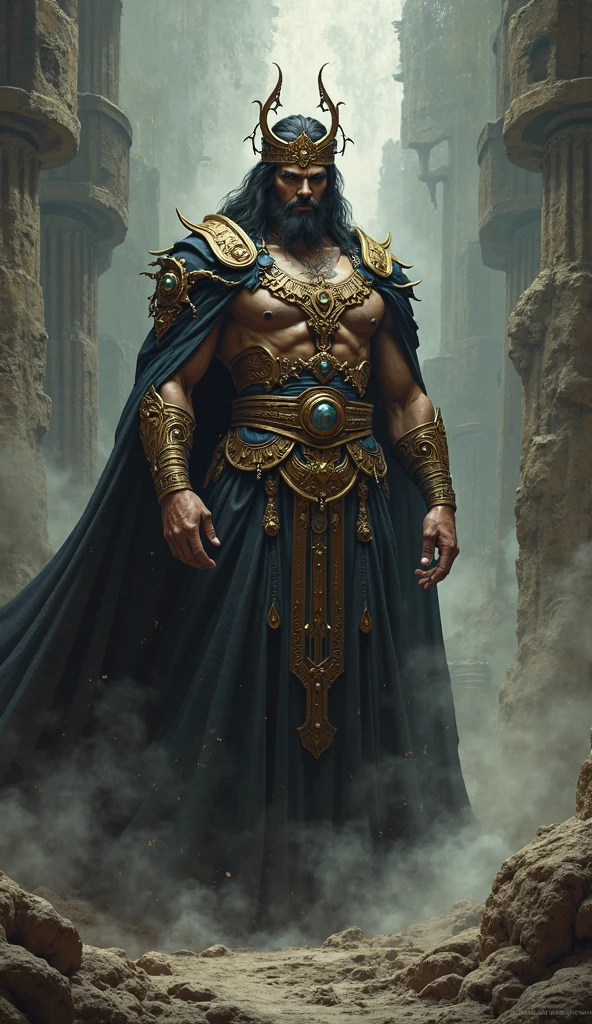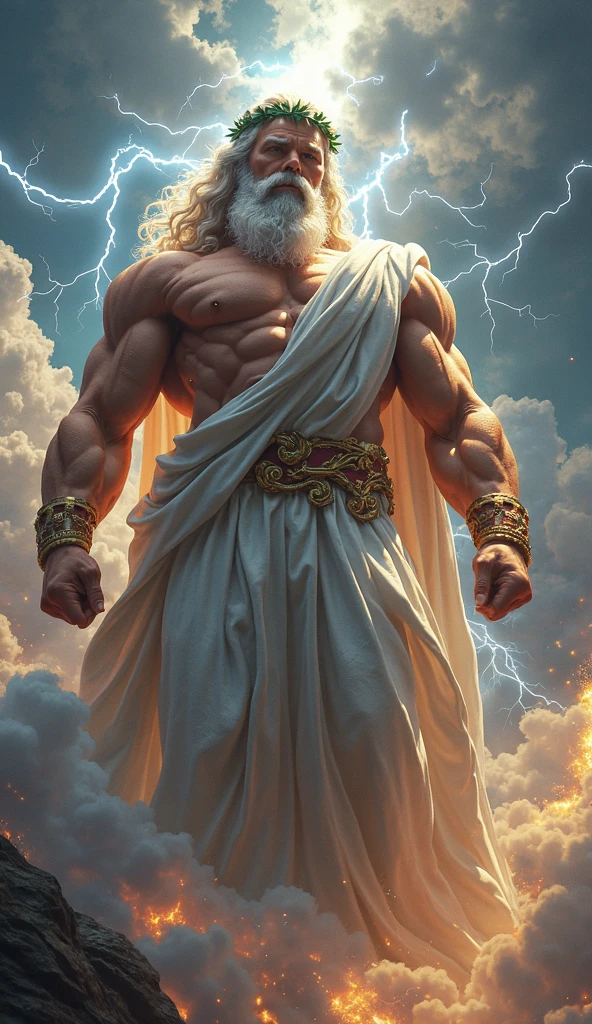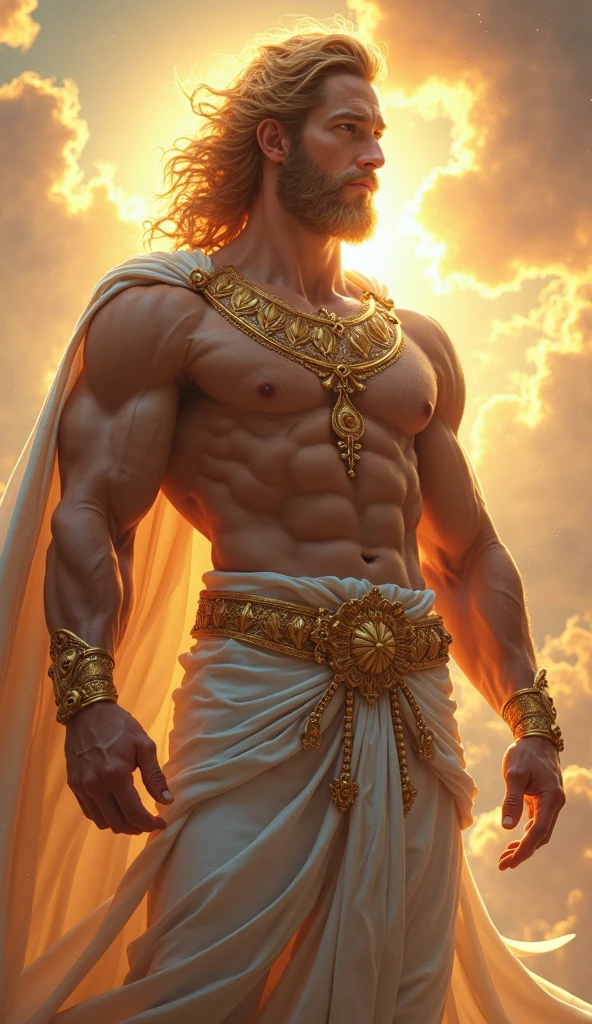Guanyin Bodhisattva Saves Souls With Mercy
In the vast pantheon of Buddhism, few figures embody compassion and mercy as profoundly as Guanyin, the Bodhisattva of Infinite Compassion. Revered across Asia, Guanyin is a beacon of hope for those suffering, offering solace and salvation through unconditional love. This article explores the origins, symbolism, and enduring influence of Guanyin in spiritual practice.
The Origins of Guanyin in Buddhist Tradition
Guanyin, known as Avalokiteshvara in Sanskrit, originated in Indian Buddhism as a male deity. Over centuries, the figure evolved into a predominantly feminine form in East Asia, symbolizing maternal nurturing and boundless mercy. The Lotus Sutra describes Guanyin as a being who hears the cries of the world and responds with swift aid.
Key Attributes of Guanyin
- Compassion: Central to Guanyin’s identity, representing selfless love.
- Thousand Arms: Symbolizing the ability to aid countless beings simultaneously.
- White Robe: Purity and transcendence of worldly suffering.
- Willow Branch: Healing and purification of karmic obstacles.
Guanyin’s Role in Modern Buddhism
Today, Guanyin remains a cornerstone of devotional practices. From chanting mantras like “Om Mani Padme Hum” to pilgrimages at sacred sites such as Mount Putuo in China, devotees seek Guanyin’s intercession for healing and protection.
| Practice | Purpose |
|---|---|
| Guanyin Mantra | Invokes compassion and removes fear |
| Water-Moon Guanyin Meditation | Cultivates inner peace and clarity |
| Offering Lights | Symbolizes dispelling darkness of ignorance |
Stories of Guanyin’s Miraculous Interventions
Countless legends illustrate Guanyin’s miraculous power. One tale tells of a fisherman saved from a storm after crying out to the Bodhisattva, while another describes Guanyin appearing as an elderly woman to guide lost travelers.
Cultural Depictions of Guanyin
Artistic representations of Guanyin vary widely:
- China: Often depicted holding a vase of nectar or a willow branch.
- Japan (Kannon): Sometimes shown with a child, emphasizing nurturing.
- Tibet (Chenrezig): Male form with four arms, embodying enlightened activity.
Guanyin and the Universal Ideal of Compassion
Beyond Buddhism, Guanyin’s message resonates interfaith. The Bodhisattva’s vow to postpone Nirvana until all beings are liberated mirrors ideals in Christianity, Hinduism, and modern humanism.
For further reading, explore these resources: Encyclopedia Britannica on Guanyin, Tricycle’s Guide to Guanyin, The Met’s Art History of Guanyin.
Descubre más artículos espirituales en nuestra web y únete a nuestra comunidad en facebook.com/zatiandrops.
The Symbolism of Guanyin’s Iconography
The visual representations of Guanyin are rich with esoteric meaning. Each element in the Bodhisattva’s depiction serves as a teaching tool for devotees. For instance, the lotus seat signifies purity rising from the mud of worldly suffering, while the moon disc behind Guanyin’s head represents the illumination of wisdom in darkness. These symbols are not merely artistic choices but profound metaphors for spiritual awakening.
Lesser-Known Symbols in Guanyin Art
- Dragon or Fish: Represents freedom from cyclic existence (samsara).
- Jeweled Necklace: Symbolizes the fulfillment of worldly and spiritual wishes.
- Scroll or Book: Embodies the teachings of the Dharma.
- Rosary Beads: A reminder of continuous compassion toward all beings.
Guanyin’s Connection to Water and Moon Imagery
One of the most poetic aspects of Guanyin is the association with water and the moon. The Water-Moon Guanyin (Shuiyue Guanyin) is a revered form where the Bodhisattva sits contemplatively by a moonlit pool. This imagery conveys the Buddhist concept of reality as illusory—like the moon’s reflection on water—while Guanyin remains undisturbed by transient phenomena.
| Element | Spiritual Meaning |
|---|---|
| Water | Adaptability, purification, and the flow of compassion |
| Moon | Impermanence and the clarity of enlightened mind |
| Reflection | The illusory nature of samsara |
Guanyin in Esoteric Buddhism
In Vajrayana Buddhism, Guanyin (as Avalokiteshvara) plays a pivotal role in tantric practices. The Six-Syllable Mantra (“Om Mani Padme Hum”) is believed to encapsulate the essence of the Bodhisattva’s compassion. Advanced practitioners engage in visualizations where they merge with Guanyin, embodying the deity’s qualities to transform their own minds.
Key Tantric Practices Involving Guanyin
- Deity Yoga: Meditative identification with Guanyin’s enlightened form.
- Mala Recitation: Chanting mantras using 108 beads to purify karma.
- Mandala Offerings: Symbolic gifts to honor Guanyin’s boundless compassion.
Guanyin’s Influence on Folk Religion
Beyond orthodox Buddhism, Guanyin is venerated in Chinese folk religion as a protector of women, children, and sailors. Temples dedicated to the Bodhisattva often serve as community hubs where people seek blessings for fertility, safe childbirth, and bountiful harvests. This syncretism highlights Guanyin’s adaptability to local cultural needs.
Regional Folk Practices
- Taiwan: The “Guanyin Opening the Eyes” ceremony, where statues are ritually activated.
- Vietnam (Quan Âm): Offerings of vegetarian food to honor her mercy.
- Singapore: The annual Guanyin Procession, blending Taoist and Buddhist rites.
Guanyin’s Gender Fluidity Across Cultures
The shift from male (Avalokiteshvara) to female (Guanyin) reflects broader cultural values. In China, the maternal aspect of compassion resonated deeply with Confucian ideals of familial piety. Meanwhile, Tibet’s Chenrezig retains a masculine form, emphasizing active compassion in a rugged spiritual landscape. This fluidity underscores the universality of the Bodhisattva’s message beyond gender binaries.
| Culture | Form | Symbolic Emphasis |
|---|---|---|
| China | Female | Nurturing, mercy, and maternal protection |
| Tibet | Male | Heroic compassion and enlightened power |
| Japan | Androgynous | Universal compassion transcending gender |
Scientific Perspectives on Guanyin Devotion
Modern studies in psychology and neuroscience have examined the effects of Guanyin devotion on mental health. Research suggests that repetitive mantra chanting (e.g., “Namo Guanshiyin Pusa”) can reduce stress by activating the parasympathetic nervous system. The Bodhisattva’s imagery also serves as a powerful focus object in mindfulness therapies.
Documented Benefits of Guanyin Practices
- Lowered cortisol levels in practitioners during meditation.
- Increased gamma brainwave activity, associated with compassion.
- Enhanced emotional resilience through devotional rituals.
Guanyin in Contemporary Art and Media
From Zhang Yimou’s films to anime like “Saint Young Men,” Guanyin continues to inspire creative reinterpretations. A notable example is the digital art series “Cyber Guanyin,” which reimagines the Bodhisattva with holographic thousand arms, symbolizing technology’s potential to amplify compassion in the digital age.
For deeper exploration, consider these resources: Buddhist Door on Avalokiteshvara, Learn Religions’ Guanyin Profile, NIH Study on Mantra Effects.
Descubre más artículos espirituales en nuestra web y únete a nuestra comunidad en facebook.com/zatiandrops.
Guanyin’s Role in Environmental Compassion
In recent years, Guanyin’s teachings have been reinterpreted to address ecological crises. Many Buddhist communities view the Bodhisattva as a patron of environmental activism, embodying the principle of interconnectedness with all life. Rituals like “Green Guanyin” ceremonies involve tree-planting and water purification, aligning spiritual practice with planetary healing.
Eco-Spiritual Practices Inspired by Guanyin
- Ocean Offerings: Biodegradable lotus lanterns released to honor water’s sanctity.
- Animal Liberation: Releasing captive creatures as acts of mercy.
- Zero-Waste Pujas: Ritual offerings using sustainable materials.
Guanyin’s Presence in Dreams and Visions
Devotees frequently report Guanyin appearing in dreams during times of distress. These encounters often involve the Bodhisattva offering guidance, healing, or symbolic objects like the Pearl of Wisdom. Psychologists note parallels between these experiences and Jungian archetypes of the Great Mother.
| Dream Symbol | Interpretation |
|---|---|
| White Light | Divine intervention or spiritual awakening |
| Broken Chains | Liberation from karmic burdens |
| Pouring Nectar | Emotional or physical healing |
The Thousand-Armed Guanyin Dance Ritual
In Tibetan and Chinese monasteries, the Thousand-Armed Guanyin Dance is performed during major festivals. Each dancer represents one arm, coordinating precise movements to symbolize the Bodhisattva’s omnipresent aid. This mesmerizing ritual serves as both meditation in motion and a living mandala.
Elements of the Sacred Dance
- Mudras: Hand gestures conveying specific blessings.
- Circular Formation: Represents the wheel of compassion.
- Synchronized Steps: Embodies harmony with all beings.
Guanyin and the Medicine Buddha Connection
In Mahayana Buddhism, Guanyin is closely associated with the Medicine Buddha (Bhaishajyaguru). Together, they represent complementary aspects of healing—Guanyin addresses emotional suffering, while the Medicine Buddha attends to physical ailments. Joint practices include chanting both their mantras while visualizing healing light.
Guanyin’s Influence on Social Justice Movements
Modern activists invoke Guanyin’s compassion when advocating for marginalized groups. The Bodhisattva’s vow to serve all beings without exception inspires humanitarian work with refugees, prisoners, and victims of injustice. Organizations like Tzu Chi Foundation operationalize Guanyin’s mercy through disaster relief and medical missions.
Social Justice Parallels
- Refugee Aid: Mirroring Guanyin’s rescue of shipwrecked souls.
- Prison Ministries: Embodying non-judgmental compassion.
- Gender Equality: Reflecting Guanyin’s transcendence of gender roles.
Guanyin’s Sacred Sites and Pilgrimage Routes
Beyond Mount Putuo, lesser-known Guanyin pilgrimage sites offer profound experiences:
| Location | Significance |
|---|---|
| Nanhai Guanyin Temple (Hainan) | 108-meter statue overlooking the South China Sea |
| Kiyomizu-dera (Kyoto) | Japanese Kannon temple with healing waterfalls |
| Potala Palace (Lhasa) | Ancient seat of Avalokiteshvara devotion |
Guanyin’s Mantras and Their Transformative Power
While “Om Mani Padme Hum” is widely known, other Guanyin mantras serve specific purposes:
- Great Compassion Mantra (Da Bei Zhou): 84-line chant for karmic cleansing.
- Namo Guanshiyin Pusa: Simple invocation for immediate aid.
- Cundi Mantra: Esoteric formula for wisdom and protection.
Guanyin in Children’s Spiritual Education
Across Asia, parents introduce Guanyin to children through simplified stories and songs. The “Guanyin Saves the Fish” tale teaches kindness to animals, while coloring books depict the Bodhisattva’s gentle form. These early exposures plant seeds of compassion that often blossom into deeper practice.
Educational Tools
- Animated Films: Like “The Legend of Miao Shan” (Guanyin’s human incarnation).
- Jade Pendant Charms: Worn for protection and remembrance.
- Children’s Mantras: Short verses set to melodic tunes.
Descubre más artículos espirituales en nuestra web y únete a nuestra comunidad en facebook.com/zatiandrops.
Guanyin’s Role in Death and Transition Rituals
In many Buddhist traditions, Guanyin is invoked during deathbed rituals to guide souls through the bardo (intermediate state). The Bardo Thodol (Tibetan Book of the Dead) describes Avalokiteshvara appearing as a radiant being to comfort the dying. Families often place Guanyin statues near the deceased and chant mantras to ensure a peaceful transition.
Funerary Practices Involving Guanyin
- 49-Day Ceremonies: Weekly chants to aid the soul’s journey.
- Paper Offerings: Burning paper lotuses symbolizing rebirth in Pure Lands.
- Water Blessings: Pouring consecrated water to purify karmic obstacles.
The Science Behind Guanyin’s Thousand-Armed Symbolism
Neuroscience research reveals fascinating parallels between Guanyin’s thousand arms and the brain’s mirror neuron system. These neurons activate both when we perform actions and observe others doing so—mirroring the Bodhisattva’s ability to empathize with countless beings simultaneously. Advanced meditators show enhanced mirror neuron activity during compassion practices.
| Neural Phenomenon | Spiritual Correlation |
|---|---|
| Mirror Neuron Activation | Guanyin’s simultaneous response to all suffering |
| Gamma Wave Synchronization | Unity consciousness experienced in deep devotion |
| Default Mode Network Deactivation | Ego dissolution during Guanyin visualization |
Guanyin’s Botanical Associations
Beyond the willow branch, several plants are sacred to Guanyin devotees. The Bodhi tree (Ficus religiosa) under which Buddha attained enlightenment is often planted in Guanyin temples. In Southeast Asia, the Guanyin bamboo (Bambusa multiplex) is cultivated for ritual use—its hollow stems symbolize the empty nature of self.
Sacred Plants and Their Uses
- Lotus (Nelumbo nucifera): Offered in ponds to represent purity.
- Sandalo (Santalum album): Incense for purification rituals.
- Chrysanthemum (Chrysanthemum morifolium): Tea offerings for longevity blessings.
Guanyin’s Astronomical Connections
Ancient Chinese astronomers associated Guanyin with the star Alpha Draconis (Thuban), once the pole star. This celestial link reinforced the Bodhisattva’s role as an unchanging guide. In modern astrology, some practitioners meditate on Guanyin during Pisces full moons, aligning with the sign’s compassionate energy.
Guanyin and Traditional Medicine
Traditional Chinese Medicine (TCM) incorporates Guanyin’s energy in healing protocols. Acupuncturists may place needles at the Compassion Point (HT7) while patients visualize white light. Herbal formulas like Guanyin Tea combine chrysanthemum, lotus plumule, and licorice to calm the spirit.
| TCM Element | Guanyin Correlation |
|---|---|
| Heart Meridian | Channel of compassion and emotional balance |
| White Color Energy | Associated with Guanyin’s radiant form |
| Water Element | Fluidity of mercy adapting to all conditions |
Guanyin’s Resonance With Quantum Physics
Some theoretical physicists draw parallels between Guanyin’s omnipresent compassion and quantum entanglement. Just as particles remain connected across distances, the Bodhisattva’s vow creates an unbreakable bond with devotees. The holographic principle in physics also mirrors Guanyin’s ability to be fully present in every part of the universe simultaneously.
Guanyin in Martial Arts Philosophy
Chinese martial arts like Tai Chi and Wing Chun embody Guanyin’s principles. The Willow Branch Palm technique in Bagua Zhang mimics the Bodhisattva’s gentle yet powerful movements. Many schools begin training with a bow to Guanyin statues, cultivating wu-wei (effortless action) through compassion.
Martial Arts Inspired by Guanyin
- Guanyin Fist: A rare style emphasizing fluidity over aggression.
- Mercy Footwork: Defensive patterns avoiding lethal strikes.
- Jade Sword Forms: Ritual dances with blades symbolizing wisdom.
Guanyin’s Presence in Cryptozoology
Folk legends describe Guanyin appearing through mystical animals. The Qilin (Chinese unicorn) is said to be her mount, while white snakes in Jiangsu caves are considered manifestations. Cryptozoologists speculate these accounts may represent rare biological species or interdimensional phenomena.
Guanyin’s Influence on Sustainable Fashion
Modern designers create Guanyin-inspired clothing lines using organic dyes and fair-trade fabrics. The Robe of Mercy collection features flowing silhouettes with upcycled temple banner textiles. These garments carry mantras woven into seams—a fusion of spirituality and eco-consciousness.
Ethical Fashion Elements
- Plant-Based Silks: Peace silk harvested without harming silkworms.
- Mudra Prints: Sacred hand gestures screen-printed with soy inks.
- Pocket Malas: Miniature rosaries sewn into garment hems.
Descubre más artículos espirituales en nuestra web y únete a nuestra comunidad en facebook.com/zatiandrops.



